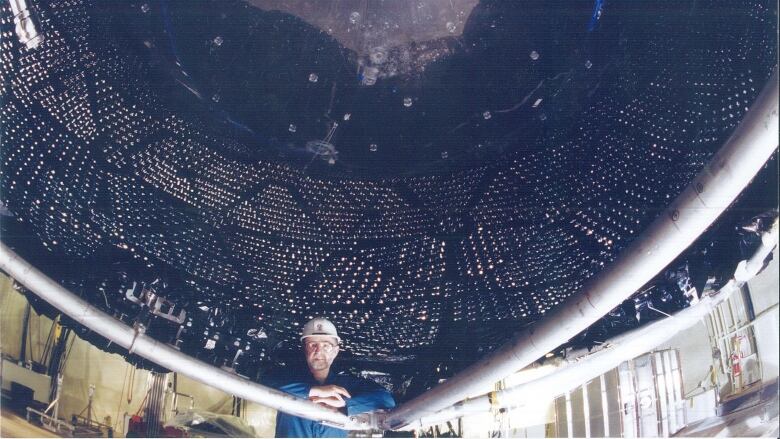Arthur McDonald, Nobel Prize winner: the man, neutrinos, why his work matters
Ian Hill from Dalhousie shares his thoughts on Arthur McDonald and why neutrinos are important

The Nova Scotia-born man who won the Nobel Prize today made a lasting impression onDr. Ian Hill, the acting dean of Dalhousie's Faculty of Science and professor of physics.
Hill has known Arthur B. McDonald since Hill was a fourth-year undergraduate student at Queen's University many years ago.
McDonald's experiments helped demonstrate that subatomic particles called neutrinos can change identities, also known as "flavours." Along with work by fellow Nobel winner Takaaki Kajita, the research showed that in order to change, neutrinos need to have mass.
Hillprovides a look at what the Cape Breton-born Nobel Prize winner is like and how his work affects you.
What was he like as a professor?
When Hill was in his fourth year at Queens, McDonald was the head of a program called the Sudbury Neutrino Observatory, which is located 2,100 metres underground in Sudbury's Creighton Mine.
Hill did his fourth-year undergraduate thesis with that project.
"He was an excellent professor. Art is just, he's a very genuine, down-to-earth, humble just a very nice guy. He conveyed information very well, was never intimidating which of course, theoretical physics certainly can be."
Wait. What's a neutrino?
The "flavours" of neutrinos include electron-type, muon-type and tau-type. They are produced by radioactive decay through nuclear reactions in stars, reactors andspace phenomena like supernovas.
Neutrinos are everywhere and they pass through normal matter and space all the time.
"There was a controversy for a really long time as to whether or not the neutrino had mass," said Hill.
"It was thought, actually, for a really long time that it had no mass, that it was massless, and that would be like a photon that carries light. Therefore, if that were the case then these massless photons would travel at the speed of light."

That was the understanding physicists had about neutrinos until McDonald and Kajita came along.
Their discovery, Hill says, "would have a big influence on our understanding of the universe."
"Although the mass would have to be very, very small if it had not been detected there are an extremely large number of neutrinos throughout the universe."
Why did McDonald'swork win the biggest prize in physics?
"So if you add this all up it ends up accounting for a large amount of mass in the universe," said Hill.
There hadbeen controversies in the scientific community about mass in the universe and if there was more therethan what we could actually see.
"You may have heard the term 'dark matter' before and there's always been questions about what makes up dark matter. So the neutrinos were one component of the missing mass in the universe."
Dark matter is hypothetical matter. It can't be seen with telescopes, which makes proving its existence difficult. But theoretically, many scientists accept that its properties are responsible for shaping the structure of the universe.
How does the discovery affect me?
"Very fundamental discoveries at one point in time lead to very practical applications at a later time and do affect people's everyday lives," said Hill.
Great understanding of physics gives way to modern invention, he says, givingthe example of quantum mechanics discovered in the 1920s that led to the computers most people carry around in their pockets.
"Time and time again in physics, as we further our understanding of the universe and the way these subatomic particles and small particles behave, has led to everyday applications. So wait and see."
What does this mean for Dalhousie?
Hill said McDonald is the first Dalhousie alumnus to win the Nobel Prize in Physics.
"At Dalhousie we're so happy to see our alumni succeeding and doing wonderful things and changing the world. We're all very, very proud."













_(720p).jpg)


 OFFICIAL HD MUSIC VIDEO.jpg)
.jpg)



























































































